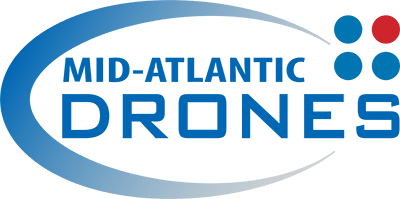If you’re an Aerial Drone Pilot or need drone photography in restricted airspace, drone flight is possible if you follow the rules. Today, we’re talking specifically about the Washington, DC restricted zone where security rules put in place after 9-11 restrict all flight activity-manned or unmanned.
This airspace is known as the DC-Flight Restricted Zone or “DC-FRZ”, an area within a 15 nautical miles radius of Reagan National Airport (KDCA). Unmanned (“drone”) flights are possible on a case-by-case basis, if your request addresses a few key details. In addition to that, the DC-FRZ is actually two distinct zones: Under 7 and 7-15 nautical miles. This distance is measured from the DCA VOR, located east of Rwy 19 on the north end of the field. Drone missions in the “inner ring” between 0 and 7 nautical miles receive more scrutiny and have more requirements than those further out. For all FRZ missions:
1. You must have legitimate business to justify the use of a drone.
Recreational flights are not allowed in this airspace and will not be approved. Your application must include a letter from your client on company letterhead indicating that they’ve hired you, for what specific purpose, and why the mission cannot be carried out by traditional means (manned aircraft or ground-based photography equipment). Don’t be afraid to briefly re-state the pilot’s qualifications and experience in the letter, as well.
2. Be ready to provide key details about your flight crew and mission.
Security is the utmost concern of officials reviewing and approving your application. You’ll need to list all flight crew personnel including Pilots, Visual Observers and any onsite assistants and their places and dates of birth, SSN or passport numbers and pilot certificate numbers (if applicable). In addition, you’ll be required to submit registration numbers and color photos of each drone to be flown on the mission. FRZ Authorizations are drone-specific, so you can’t fly the mission if you don’t clear the drone(s) you want to fly. If you plan on using more than one aircraft, be sure to state whether more than one will be flying at a time and if so, how you will mitigate any anticipated problems and maintain safety and security.
3. You must demonstrate your dedication to safety and planning.
A mission in the DC-FRZ requires specific planning with forethought given to launch and recovery points, contingency plans, and specific flight routes and altitudes. You can’t make it us as you go along. Your application must include maps that clearly delineate the flight area(s) and list the launch and recovery coordinates. You should also outline any “lost link” or flyaway procedures and how you plan to mitigate unplanned encroachment of other aircraft or non-participants into your flight area during the mission.
4. Your authorization requires specific activation and communication procedures.
Once you’re successful, your authorization requires you to send a “Heads Up” email to the TSA 24 hours in advance of your proposed operations. On flight day, you’re also responsible for notifying TSA and the tower one hour before commencing flights and at the end of operations. TSA will also require you to call back every two hours to keep flying.
5. Close-in Missions (0-7 nautical miles) have additional requirements.
For drone photography and flights in the 0-7 nautical mile range of DCA, you’ll need to be flying for a government entity or have the support of one and be able to provide this documentation with your application. In addition, you’ll be required to hire a law enforcement officer from the jurisdiction where you are flying. This person will check all aircraft registrations and operator licenses to ensure compliance with the COA. They are also responsible for communicating with the TSA and the Secret Service before any flight equipment is activated. Be prepared to submit additional proof of insurance-including worker’s compensation coverage-to the LEO coordinator when arranging.
Flying in restricted airspace is possible. If you take the time and effort to think things through, plan your mission and provide all required documentation and information in a timely manner, you’ll be adding Flight Restricted Zones to your flight plans and offerings in no time.
Mid-Atlantic Drones has extensive experience flying controlled and restricted airspace, including downtown DC and the DC-FRZ. Managing partners Mike Sobola and Luisa Winters are licensed for flying manned aircraft as well as drones. Between them, they have logged nearly 1600 hours as Pilot-In-Command of a drone.





